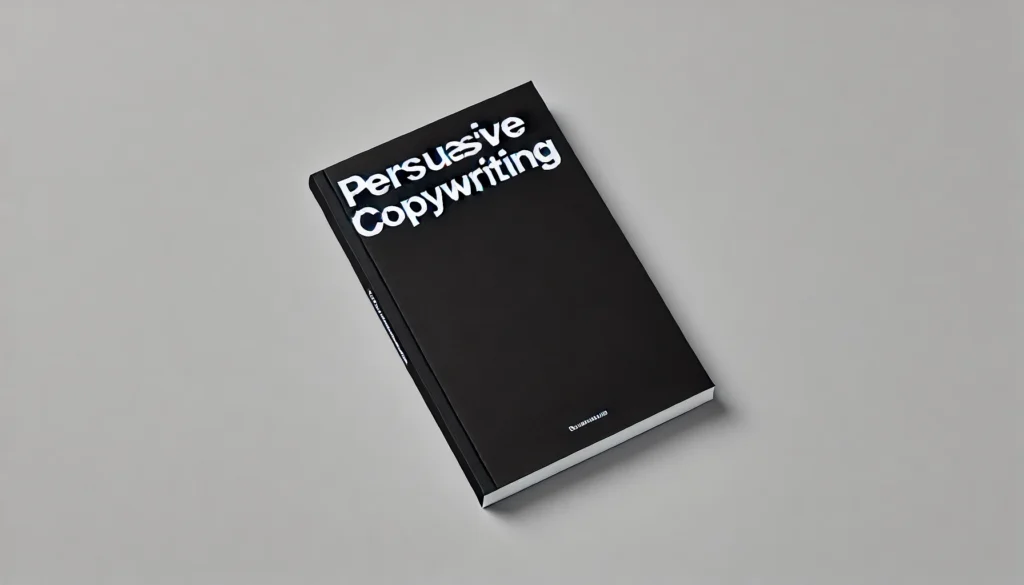Summary of Persuasive Copywriting: Using Psychology to Influence, Engage and Sell by Andy Maslen

What’s in it for me?
Master the art of copywriting by harnessing psychological principles that influence, engage, and drive sales.
Persuasive Copywriting by Andy Maslen delves deep into the intersection of psychology and writing, offering a comprehensive approach to creating copy that not only grabs attention but also converts readers into customers. Maslen combines scientific research with practical techniques to help writers craft messages that resonate on an emotional level, driving action and engagement.
This summary will explore the key ideas presented in the book, focusing on the role of emotions in copywriting, the power of storytelling, the importance of understanding your audience, and practical techniques to enhance your writing’s effectiveness.
Key Idea 1: Tapping into Emotions—The Heart of Persuasive Copywriting
Maslen begins by emphasizing that emotion trumps logic when it comes to persuasion. He explains that while facts and figures are important, it is the emotional impact of your message that truly drives decisions. The limbic system, the part of the brain responsible for emotions, plays a crucial role in decision-making, often bypassing rational thought processes.
Maslen outlines the importance of identifying the primary emotion that your copy should evoke, whether it’s fear, desire, or excitement. He provides practical advice on how to use emotional language to connect with your audience on a deeper level. This connection is what ultimately motivates them to take action, whether it’s making a purchase, signing up for a service, or engaging with your brand.
The key takeaway is that effective copywriting isn’t just about what you say, but how you make your audience feel. By focusing on emotional triggers, you can craft copy that resonates and compels readers to act.
Key Idea 2: The Science of Storytelling—Engaging Your Audience
Storytelling is a powerful tool in the copywriter’s arsenal, and Maslen explains why it works so effectively. Stories are a fundamental part of human communication; they help us make sense of the world and connect with others. In copywriting, stories can be used to illustrate the benefits of a product, humanize a brand, or create a narrative that resonates with the reader’s own experiences.
Maslen emphasizes that a good story in copywriting should be relatable, engaging, and emotionally charged. He provides techniques for crafting stories that capture the reader’s attention and lead them naturally to your call to action. The goal is to make the reader see themselves in the story, making the decision to engage with your brand feel personal and meaningful.
By integrating storytelling into your copy, you not only engage your audience but also create a memorable message that sticks with them long after they’ve read it.
Key Idea 3: Understanding Your Audience—The Foundation of Effective Copy
A key theme in Maslen’s book is the importance of understanding your audience. He argues that knowing who you’re writing for is crucial to creating persuasive copy. This involves more than just demographics; it’s about understanding the motivations, desires, and pain points of your audience.
Maslen introduces the concept of customer personas—detailed profiles of your ideal customers that help you tailor your messaging to their specific needs and preferences. By writing with these personas in mind, you can create copy that speaks directly to your audience, addressing their concerns and offering solutions that feel personalized and relevant.
This approach ensures that your copy is not only persuasive but also targeted, increasing the likelihood of conversion.
Key Idea 4: Practical Techniques—Crafting Copy That Sells
Maslen offers a wealth of practical techniques for enhancing your copywriting skills. These include using power words that evoke strong emotions, employing rhetorical devices like repetition and contrast to reinforce your message, and structuring your copy in a way that guides the reader toward your desired outcome.
One of the most valuable techniques Maslen discusses is the use of calls to action (CTAs). He explains that a CTA should be clear, compelling, and positioned in a way that feels natural within the flow of your copy. Whether you’re asking the reader to make a purchase, sign up for a newsletter, or download a resource, the CTA should feel like the logical next step in their journey with your brand.
By mastering these techniques, you can create copy that not only captures attention but also drives results.
Key Idea 5: The Art of Continuous Improvement—Refining Your Copywriting Skills
Maslen concludes by stressing the importance of continuous improvement in copywriting. He encourages writers to regularly review and refine their work, testing different approaches to see what resonates best with their audience. This process of iteration and experimentation is key to staying effective in a constantly changing digital landscape.
Maslen also emphasizes the value of feedback—both from your audience and from peers. By seeking out constructive criticism and staying open to new ideas, you can continue to grow as a copywriter and keep your skills sharp.
The pursuit of excellence in copywriting is a never-ending journey, and Maslen’s book provides the tools and insights needed to stay ahead of the curve.
Closing Note
If this summary resonated with you, your feedback would be greatly appreciated. Your thoughts help us continue to improve and provide the content you love. See you in the next summary!